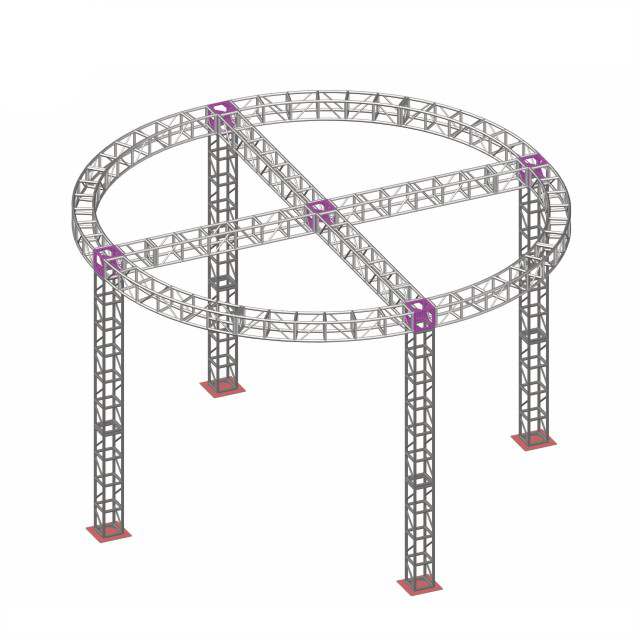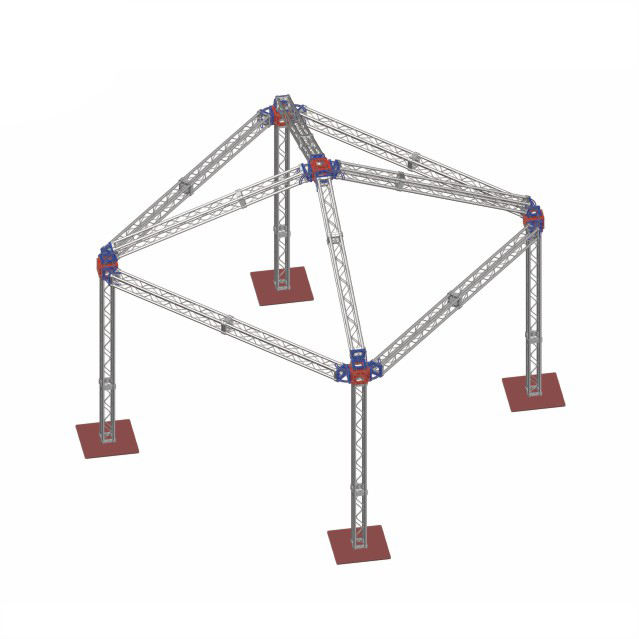What Are You Looking For?
The design and implementation of a custom arched aluminum truss frame system for small concert venues require a careful consideration of numerous factors. Through meticulous engineering calculations, appropriate material selection, and a thorough understanding of the venue's specific characteristics, a safe, aesthetically pleasing, and structurally efficient system can be created. The advantages of such a system, in terms of aesthetics, acoustics, space optimization, and flexibility, make it a worthwhile investment for venues seeking to enhance the quality and experience of their live music events. However, it's crucial to emphasize the paramount importance of employing experienced structural engineers to ensure compliance with relevant safety regulations and codes. Only with expert guidance can the vision of a captivating and safe concert experience become a reality.
The successful execution of a small concert requires meticulous planning and consideration of numerous factors, ranging from acoustics and lighting to safety and aesthetics. One crucial element often overlooked is the structural framework supporting the sound and lighting systems – the trussing. While standardized trussing systems are readily available, bespoke designs, particularly arched aluminum truss systems, offer significant advantages in terms of visual appeal, structural efficiency, and adaptability for small concert venues.

Design Considerations and Engineering Challenges:
The design of an arched aluminum truss system begins with a clear understanding of the specific requirements of the venue. Key considerations include:
Venue Dimensions and Capacity: The overall size and shape of the venue dictates the span and height of the arch. A larger venue will require a longer, higher arch, demanding a robust and carefully engineered structure. The anticipated audience capacity directly influences the loading requirements, impacting the selection of truss size and configuration.
Load Calculations: Accurate load calculations are paramount. This involves determining the weight of the sound system (speakers, subwoofers, amplifiers), lighting fixtures, and any other equipment suspended from the truss. These calculations must account for both static loads (the weight of the equipment) and dynamic loads (vibrations and potential movement during the performance). Safety factors are incorporated to account for unforeseen circumstances and ensure structural integrity.
Material Selection: Aluminum is the preferred material due to its high strength-to-weight ratio, corrosion resistance, and ease of fabrication. The selection of specific aluminum alloy depends on the required strength and the anticipated loading. Higher-strength alloys are necessary for larger spans and heavier loads. The design must also consider the fatigue properties of the aluminum, ensuring the structure can withstand repeated cycles of loading and unloading without failure.
Arch Geometry: The shape of the arch significantly impacts its structural behavior. A semicircular arch is aesthetically pleasing but can be less structurally efficient than a parabolic or catenary arch, which better distribute loads. The choice of arch geometry is a compromise between aesthetics and structural optimization. Finite Element Analysis (FEA) software is commonly used to model and analyze different arch shapes, optimizing for strength and minimizing material usage.
Joint Design and Connections: The connections between the individual truss sections are critical for overall structural stability. These connections must be robust and capable of transferring loads efficiently. The design must account for the potential for stress concentrations at the joints, employing appropriate bracing and reinforcement techniques. High-strength bolts and specialized connectors are typically employed to ensure secure and reliable connections.
Wind Loading: Depending on the venue's location and exposure, wind loading can be a significant factor. The design must account for wind pressures and ensure the structure can withstand the forces generated by high winds. This may involve incorporating wind bracing elements into the design.
Accessibility and Rigging: The design should facilitate safe and efficient rigging and de-rigging of the equipment. Access points should be readily available for technicians to work on the truss system, and the system should be designed to minimize the risk of accidental falls or injuries.

Practical Applications and Advantages:
A custom arched aluminum truss frame system offers several advantages for small concert venues:
Enhanced Aesthetics: The arched design provides a visually striking focal point for the stage, creating a more captivating atmosphere for both performers and the audience. This contrasts with the more utilitarian appearance of standard rectangular trussing.
Improved Sound Distribution: The curved shape of the arch can help to improve sound dispersion, ensuring consistent sound coverage throughout the venue. This is particularly beneficial in venues with challenging acoustics.
Space Optimization: A well-designed arched truss system can maximize usable space in the venue, allowing for a more efficient layout of equipment and stage elements.
Flexibility and Adaptability: A custom-designed system can be tailored to the specific needs of the venue and the events it hosts, offering greater flexibility compared to off-the-shelf solutions.
Improved Safety: Proper engineering and design ensure a structurally sound and safe system for the performers, crew, and audience.